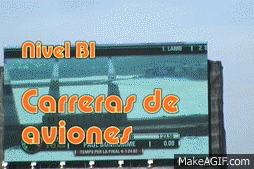What's VideoEle?
This is a website which offers videos to learn Spanish as a foreign language. It is addressed therefore to those whose mother tongue is not Spanish and wish to learn Spanish as a foreign language, whether or not they live in a Spanish speaking country.
Frequently asked questions:
VideoEle´s self-directed units are based on short videos of 3 to 6 minutes duration. The relevant resource booklet can be printed on a PDF file.
The course has a special emphasis on audiovisual and reading comprehension skills.
VideoEle can be used in many ways by teachers as supplementary material in the classroom. One option could be that the teacher asks students to watch a video at home to be reviewed in the next class.
If your school has a computer lab or your classroom has an internet connection, you can watch a video with your students during class time.
VideoEle can also be used by self-taught learners of Spanish. The teaching and learning materials available in this website will allow learners to refresh their Spanish knowledge; consolidate previously learnt material and extend their communicative competence in the Spanish language.
VideoEle is completely free! Each video is available with its own transcript, resource booklet and answer booklet. It is suitable for all Spanish learners. The only income which VideoEle receives comes from advertisements.
If you think that the free education material offered in this website is useful, you can help fund this project by simply visiting the advertisements which will appear alongside the videos.
VideoEle is a non-profit making organisation. Any donations will be employed to further develop the project. This will include the website hosting service, IT and audiovisual materials.
A video is a very strong tool in foreign language learning. On the one hand, it allows the student to practice listening comprehension in an attractive and contextualized way. Furthermore, the images show many cultural elements which reflect the day to day life of a Spanish speaking town.
All of these videos have been made by myself in everyday situations. They are educational because they have been specifically created for learners of Spanish as a foreign language. In other words, VideoEle does not contain videos addressed to Spanish native speakers such as advertisements, films, musical videos, events or shows. Each video has been purposely created so that students can learn specific cultural elements, grammatical structures and as well as specific vocabulary.
These videos have not been created by a professional film making company. They show day to day spontaneous scenes which have been filmed with a private video camera and edited with a personal computer.
The videos are classified according to level descriptors defined by both the European Framework of Reference for Languages and also the schemes of work of the Instituto Cervantes. Therefore, VideoEle contains materials for the following levels: A1, A2, B1 and B2. VideoEle does not contain videos for levels C1 and C2.
For any of the levels described above, texts have been carefully created with the intention that they are easy to understand and that language learners can access the content appropriate to their level.
This is a document which was published in 2001 under the auspices of the Council of Europe with the aim of providing:
"a common frame of reference for the creation of language syllabuses, curriculum guidelines, course examinations, textbooks, etc. across Europe."
Its full name is Common European Framework of Reference for Languages: Learning, Teaching, Assessment (CEFR). For more information, visit Council of Europe website.
Published in 2006, the full title of the Syllabus is Plan curricular del Instituto Cervantes. Niveles de referencia para el español. Its objective is to:
"Present an updated version of the specifications of teaching objectives and contents from the Spanish Institute’s Syllabus, in accordance with the six levels of progression for language learning established by theCommon European Framework of Reference of the European Council."
To learn more about this, you can access the website of the Instituto Cervantes via this link:
Students that have reached level B2 already have a strong communicative competence as well as enough language strategies to be able to cope with videos which are addressed to native speakers and can learn directly from them.
Level C students can learn from a wide range of audiovisual material such as: advertisements, films, short documentaries, TV shows, YouTube videos and so on.
The Spanish linguistic variety used in the audios is the standard Spanish of central and northern Spain. In addition, it is important to note that a large number of images and places used in the videos are from Barcelona and its surrounding areas.
Click on the Teachers' area, where you find how to complement your course with VideoEle materials.
Click on the section Contact in the same website, and complete the relevant form.
You can also send a message to [email protected]
Text translated by Carmen Castro.
